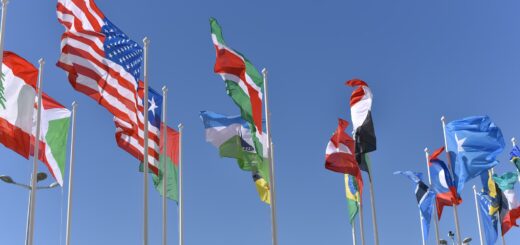Political Parties of Central Asia

Political parties do not exist to adorn the facade of the building of state power; their task is to fight for power.
The political life of modern states is inconceivable without the active activity of party structures. It is the political parties that serve as the running parts of the mechanism of democracy in the state. They accumulate the interests of individual groups of society and try to implement them through their representation in government. And since a developed society in the present conditions simply cannot be homogeneous, let alone think according to a single, once and for all given template, the situation when the political system of a state does without parties at all, or if it includes only one political party, cannot be considered normal at all.
From a formal point of view, the Central Asian region does not seem anachronistic in this respect: political parties exist in all the states of the region without exception. Moreover, the constitutions of all the countries of the region proclaim the principle of multi-party political life. In reality, however, the situation with political parties here does not look so optimistic when analyzed more thoroughly.
Of course, each of the Central Asian countries has its own specifics of party life. Nevertheless, it is possible to observe common typological features, which, despite the diversity of situations with the place and role of parties in the life of Central Asian states, still allow us to critically perceive local realities. We begin with a purely quantitative criterion. The smallest number of political parties operates in Turkmenistan, where the authorities allow only one such structure – the Democratic Party – to operate. The largest number of political parties operates in Kyrgyzstan: their number is constantly changing, but in recent years it does not fall below a few dozen. The number of parties has relatively stabilized over the past two years in Uzbekistan, where there are five parties. Tajikistan with its 8 political parties is close to the same stabilization. In Kazakhstan, the process of emergence of new political parties continues, and last week there were held constituent congresses of two new opposition parties. Nevertheless, stabilization is noticeable here as well, since new parties emerge mainly by reforming the pre-existing party structures. Therefore the number of parties in Kazakhstan in recent years fluctuates in the range of 10-12 parties.
It would seem that from the above, we could question the effectiveness of party life in only one country in the region – Turkmenistan. However, let us not rush to conclusions. If we take the next step in our analysis, and find out whether there is a division of available parties according to a quite natural political science criterion – into pro-governmental and opposition parties, we will easily find out that one group with Turkmenistan should also include Uzbekistan, all political parties of which are actually represented only by structures loyal to the current government.
But even this is not enough, because in real political life it is not so much important whether there are competing political parties in the society, but whether the proper conditions for their self-realization are created. And political parties do not exist to adorn the facade of the state building, their task is to fight for power. And here we come to an obvious conclusion: only in one Central Asian country, Kyrgyzstan, are political parties somehow fulfilling their purpose. Their struggle for power, for better or for worse, affects politics.
In all other states, power is blatantly nonpartisan, and, moreover, it tries by all means to neutralize the party factor as a mechanism for rotation and change of power. This is simply done with varying degrees of professionalism and political cynicism in different countries. In Turkmenistan and Uzbekistan, opposition parties are trivially denied the opportunity to engage in political life, such attempts are blocked already at the stage of emergence of opposition political structures. In Kazakhstan and Tajikistan, the authorities use milder methods. Often opposition parties are not registered on various pretexts, their ranks are artificially split by administrative means, and leaders of such parties are subjected to criminal prosecution on charges, for which, in fact, many officials of acting state structures could easily be put behind bars. Such practice is most skillfully managed by the authorities of Kazakhstan. As a result, on the one hand it seems that the party life in the republic is thriving, but on the other hand – during the last parliamentary elections the opposition parties could get only one representative to the legislative body. The homogeneity of power was thus preserved, but there are far fewer reproaches directed at Nazarbayev than at his colleague Niyazov. In Tajikistan on the last parliamentary elections the opposition ran six of its candidates, but in percentage proportion they are totally inferior to the pro-governmental politicians in the Legislature, just like in Kazakhstan.
If we consider the situation not with parliamentary but with presidential elections, the tendency will be even more obvious. The incumbent authorities do not even allow for the thought that someone could replace them by winning an election. All forces and means are being mobilized for that. Because of this, the elections of heads of Central Asian states are not a competition between political parties, but rather a ritual of legitimacy confirmation of the former ruler, updated and modernized by “progressive directors”. Hence the fantastic numbers of voters for the first person of the state.
In jurisprudence, as in philosophy, there are notions of “form” and “content”. Jurists, for example, distinguish among robbery, theft, and fraud. The robber attempts to take someone else’s property with violence. A swindler is more subtle; he speculates on the trust of another person. But in both cases the underlying meaning of their actions is to take possession of someone else’s property.
So it is with party life in Central Asia. It seems to be different, but in fact its essence is almost always the same. And this essence is far from what is called democracy.


